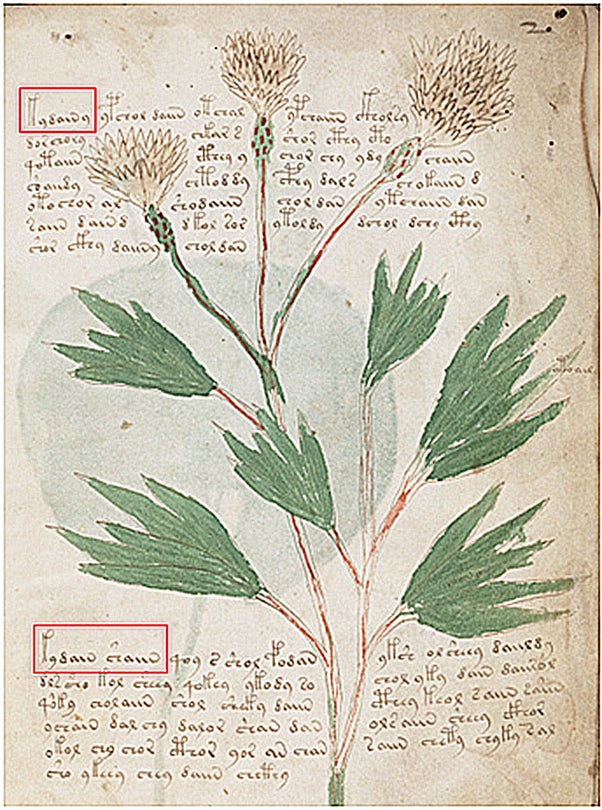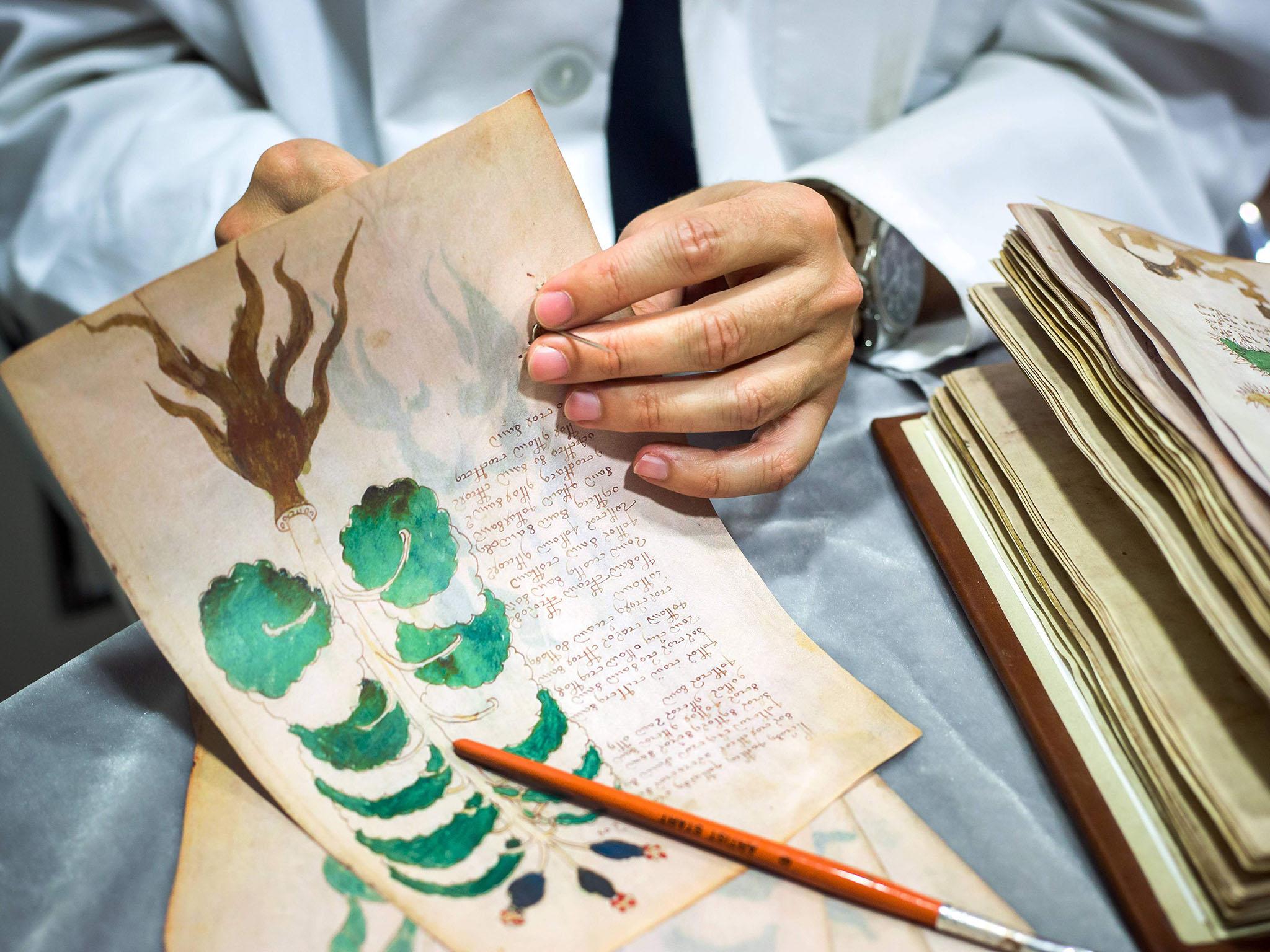Copies of mysterious Voynich Manuscript to be published for the first time in hopes that someone will crack its code
With its wild drawings and impenetrable script, the manuscript has tantalised experts for decades

Your support helps us to tell the story
From reproductive rights to climate change to Big Tech, The Independent is on the ground when the story is developing. Whether it's investigating the financials of Elon Musk's pro-Trump PAC or producing our latest documentary, 'The A Word', which shines a light on the American women fighting for reproductive rights, we know how important it is to parse out the facts from the messaging.
At such a critical moment in US history, we need reporters on the ground. Your donation allows us to keep sending journalists to speak to both sides of the story.
The Independent is trusted by Americans across the entire political spectrum. And unlike many other quality news outlets, we choose not to lock Americans out of our reporting and analysis with paywalls. We believe quality journalism should be available to everyone, paid for by those who can afford it.
Your support makes all the difference.A Spanish publishing house has won the right to publish a limited series of reproductions of the so-called Voynich Manuscript, whose parchment-like pages of strange letters and swirling images have bamboozled the world of medieval academe and cryptology for decades.
Indeed, by making copies of the tantalising tome available to a wider audience for the first time, its custodians at Yale University are hoping that perhaps someone somewhere in the world will glimpse its pages and step forward with the key to crack their strange and wonderful code. There are 20-25 unique symbols in the book’s text, all running in a jumble no one can grasp.
Originally thought to have been written by the English friar and philosopher Roger Bacon in the 13th Century until carbon dating methods seemingly ruled it out - it is now believed to have been penned in the early 15th century - the book is so named because it was acquired by Wilfrid Voynich, an American-Polish rare books dealer, in 1912 from monks in Italy.
It’s pages not only feature long flights of the indecipherable text - experts are mostly agreed it appears to be some kind of cipher based on Roman letters - there is a wealth of illustrations, not least among them images of naked women apparently wading through liquid, astral drawings and representations of more than a hundred plants, the species of which no one can recognise.

It was apparently the endless bombardment of their offices by people claiming to have cracked the secrets to the manuscript by seeing the pages on the internet that persuaded the custodians of the Beinecke Library at Yale, to agree to let someone publish copies.
It took Gil de Siloe of Burgos in northern Spain, which specialises precisely in printing very small runs of extremely precious, not to say impenetrable, books, ten years to persuade the library they were the right people for the job. The plan is to print 898 replicas of the manuscript, with every detail the same as in the original, down the tears and imperfections of each of its pages.

“It's a book that has such an aura of mystery that when you see it for the first time... it fills you with an emotion that is very hard to describe,” Juan Jose Garcia, director of Siloe told Agence France-Press, the French wire agency.
According to the library, the book may have first fallen into the hands of Emperor Rudolph II of Germany (Holy Roman Emperor, 1576-1612), who then seemingly gave the manuscript to Jacobus Horcicky de Tepenecz. Mr Voynich bought it from the Jesuit College at Frascati near Rome. In 1969, it was donated to the Beinecke Library by H. P. Kraus, who had purchased it from the estate of Ethel Voynich, Mr Voynich's widow.

With so limited a print schedule, anyone wanting their own copy of the Voinich had better put their order in with Siloe quickly, if they are not already too late. And they will need a healthy credit card. The copies will be sold for €7,000-8,000 (£6,000-6,900) each, Mr Garcia said.
Join our commenting forum
Join thought-provoking conversations, follow other Independent readers and see their replies
Comments